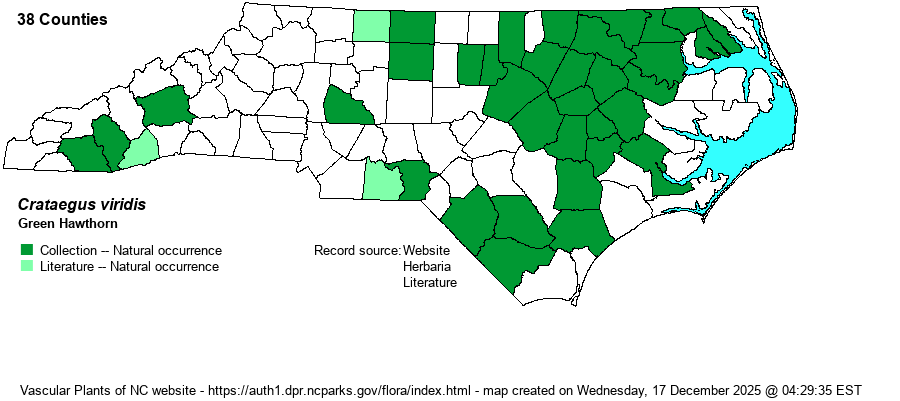| taxonName | relationship | relatedTaxonName | relatedTaxonRefText | relComments |
|---|
| Crataegus viridis | > | Crataegus viridis var. viridis | Kalkman in Kubitzki (2004). | |
| Crataegus viridis | > | Crataegus viridis | Kalkman in Kubitzki (2004). | |
| Crataegus viridis | > | Crataegus interior | Kalkman in Kubitzki (2004). | |
| Crataegus viridis | > | Crataegus vulsa | Kartesz (1999) | |
| Crataegus viridis | > | Crataegus vulsa | Kalkman in Kubitzki (2004). | |
| Crataegus viridis | > | Crataegus penita | Kartesz (1999) | |
| Crataegus viridis | > | Crataegus penita | Kalkman in Kubitzki (2004). | |
|
|
|
|
|
| Crataegus viridis | > | Crataegus viridis var. lanceolata | Fernald (1950) | |
| Crataegus viridis | > | Crataegus viridis var. lanceolata | Flora of North America (1993b, 1997, 2000, 2002a, 2002b, 2003a, 2004b, 2005, 2006a, 2006b, 2006c, 2007a, 2009, 2010) | |
| Crataegus viridis | > | Crataegus viridis var. lanceolata | Gleason (1952) | |
| Crataegus viridis | > | Crataegus viridis var. lanceolata | Kalkman in Kubitzki (2004). | |
| Crataegus viridis | > | Crataegus viridis var. ovata | Fernald (1950) | |
| Crataegus viridis | > | Crataegus viridis var. ovata | Flora of North America (1993b, 1997, 2000, 2002a, 2002b, 2003a, 2004b, 2005, 2006a, 2006b, 2006c, 2007a, 2009, 2010) | |
| Crataegus viridis | > | Crataegus viridis var. ovata | Gleason (1952) | |
| Crataegus viridis | > | Crataegus viridis var. ovata | Kalkman in Kubitzki (2004). | |
| Crataegus viridis | > | Crataegus viridis var. velutina | Flora of North America (1993b, 1997, 2000, 2002a, 2002b, 2003a, 2004b, 2005, 2006a, 2006b, 2006c, 2007a, 2009, 2010) | |
| Crataegus viridis | > | Crataegus viridis var. velutina | Kalkman in Kubitzki (2004). | |
| Crataegus viridis | > | Crataegus viridis var. viridis | Fernald (1950) | |
| Crataegus viridis | > | Crataegus viridis var. viridis | Flora of North America (1993b, 1997, 2000, 2002a, 2002b, 2003a, 2004b, 2005, 2006a, 2006b, 2006c, 2007a, 2009, 2010) | |
| Crataegus viridis | > | Crataegus viridis var. viridis | Gleason (1952) | |
| Crataegus viridis | > | Crataegus viridis var. viridis | Kartesz (1999) | |
| Source: Weakley's Flora |

